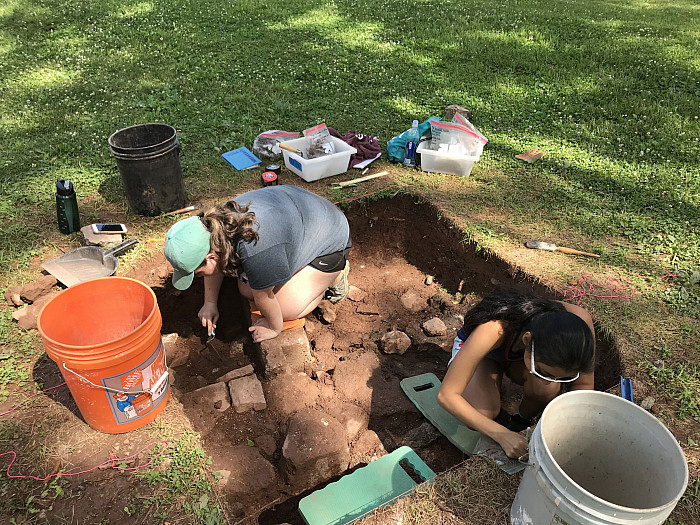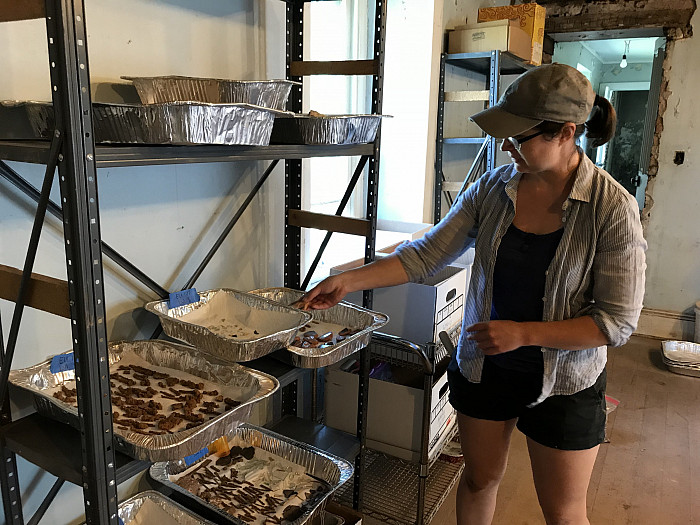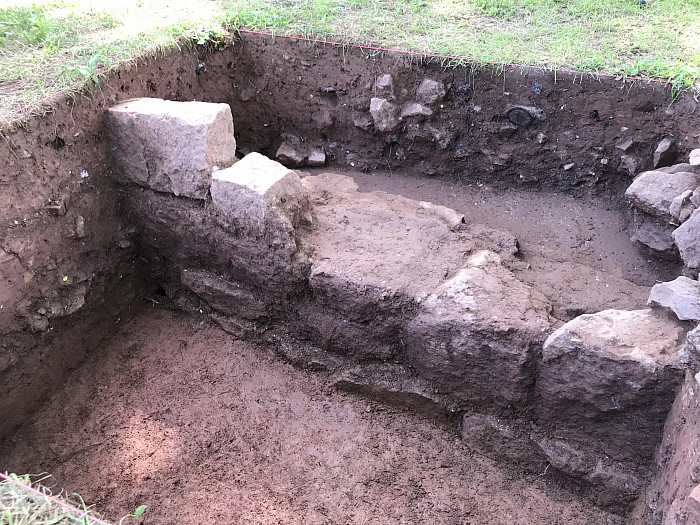The Big Ursinus Dig
The four-week course was offered in conjunction with the nonprofit organization that owns and is restoring the 255-year-old home once owned by Frederick Muhlenberg, as well as the property on which it still stands.
Combining lessons in archaeological methods and theory with hands-on excavation training, four Ursinus students—two of them taking the course for credit and two of them Speaker’s House interns—learned to identify and interpret discovered artifacts and place archaeological information within a cultural and historical framework.
Behind the restored historical garden on the site, Neve Durrwachter ’21 took a short break from sifting through dirt on a large, upstanding, sieve-like tool. “This is screening,” she explains. “We put all of the dirt that we dig up onto the screen and sift out everything that’s not important and pick out the artifacts, like coal and slate. We’ve been finding a lot of oyster shells.”
Pennsylvania is a hub of historical interest, home to some of the nation’s earliest moments and dozens of prominent figures in America’s past. Trappe, Pa., which celebrated its 300th anniversary in 2017, is no exception, and the large stone building stands as the one of biggest indications of the borough’s rich background.
Originally built in 1763, the home became the property of Muhlenberg, the first speaker of the U.S. House of Representatives, in 1781. Over the course of the next couple hundred years, the house changed ownership more 20 times, including in 1924, when it was purchased by Ursinus College and turned into a men’s athletic dormitory called Highland Hall. In 2006, the Speaker’s House became the first officially registered state archaeological site in Trappe.
It has shown Main Street several different faces over the years, adding and removing extensions and eventually gaining a white plaster facade and a mansard roof, before current efforts to restore it to its original appearance. This summer, the Ursinus students worked in select areas on the property to uncover artifacts and discover forgotten structures.
By using a combination of ground penetrating radar (GPR) and tax records, it had previously been discovered that a barn once sat on the property. One of the many projects that the summer students focused on was uncovering the original barn walls that remain underground.
“We just finished mapping and doing all the paperwork for the new features we just discovered,” said Emily Riley ’19, a Speaker’s House intern. “Now we’re trying to get underneath them to see what’s going on deeper and to find out if this really is the wall we think it is.”
While most class hours were spent outdoors digging, sifting and classifying artifacts, there is also dedicated time to classwork, including relevant reading assignments and perusing historical documents, including personal probate inventory.
“We try to do enough preparation in the classroom so that students who don’t have a background in archaeology still get the basic experience they need,” said Lydia Garver, the principal investigator of the Speaker’s House archaeology project who taught the summer course. “One of the other things we do in class is teach the students how to identify different kinds of historic ceramics because that’s what we actually use to date the soil layers and features.”
“Methods like radiocarbon dating have too much of a margin of error, so you can’t use them at historic sites,” she said. “The ceramics are really dateable, so we use those.”
Across the property, students focused on different tasks. Some were hard at work uncovering the barn wall, others excavated an area near where an old porch used to stand. There, century-old buttons and sewing needles were a common discovery.
“I’m very fortunate that this is now an opportunity because it’s not something that you can do during the school year,” Durrwachter said of the summer course. “It’s great to get as much experience as you can. The culmination of the all things that I’m learning while working alongside everyone has been exciting.” —By Mary Lobo ’15





